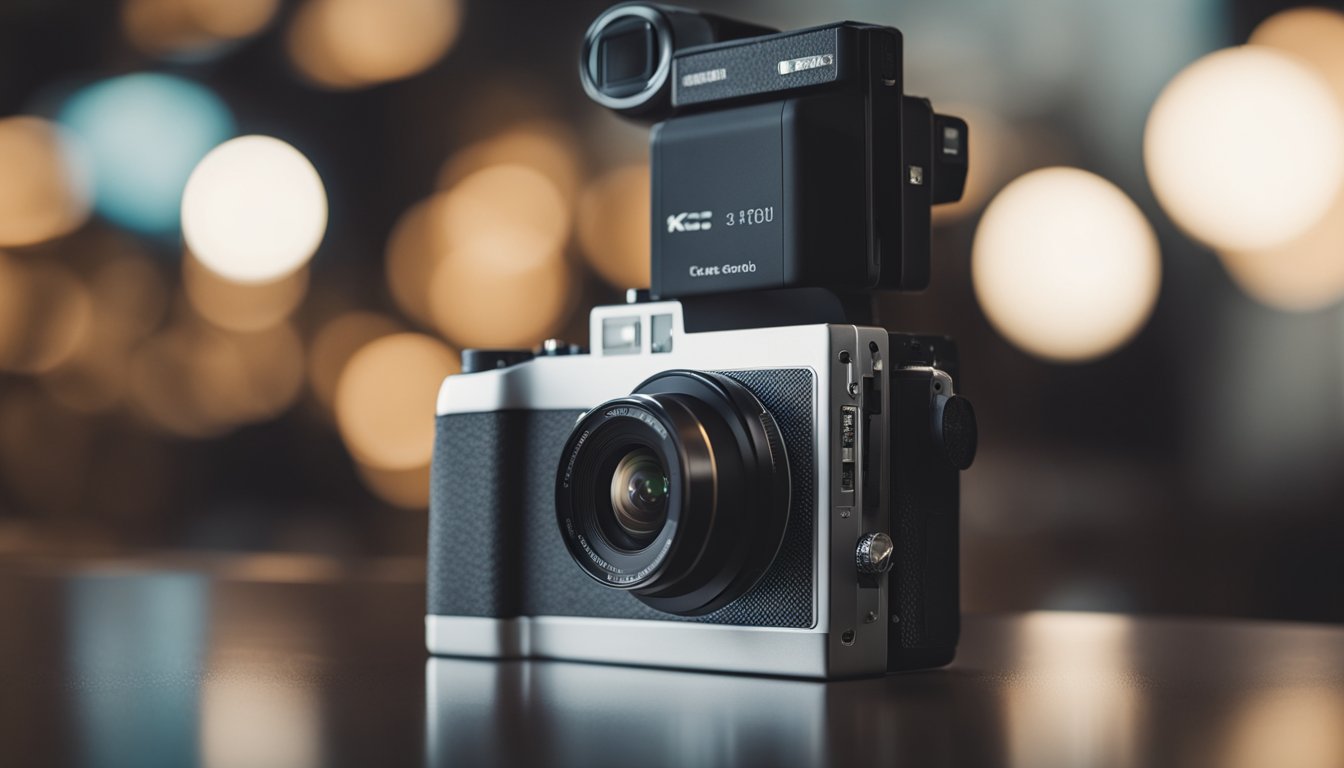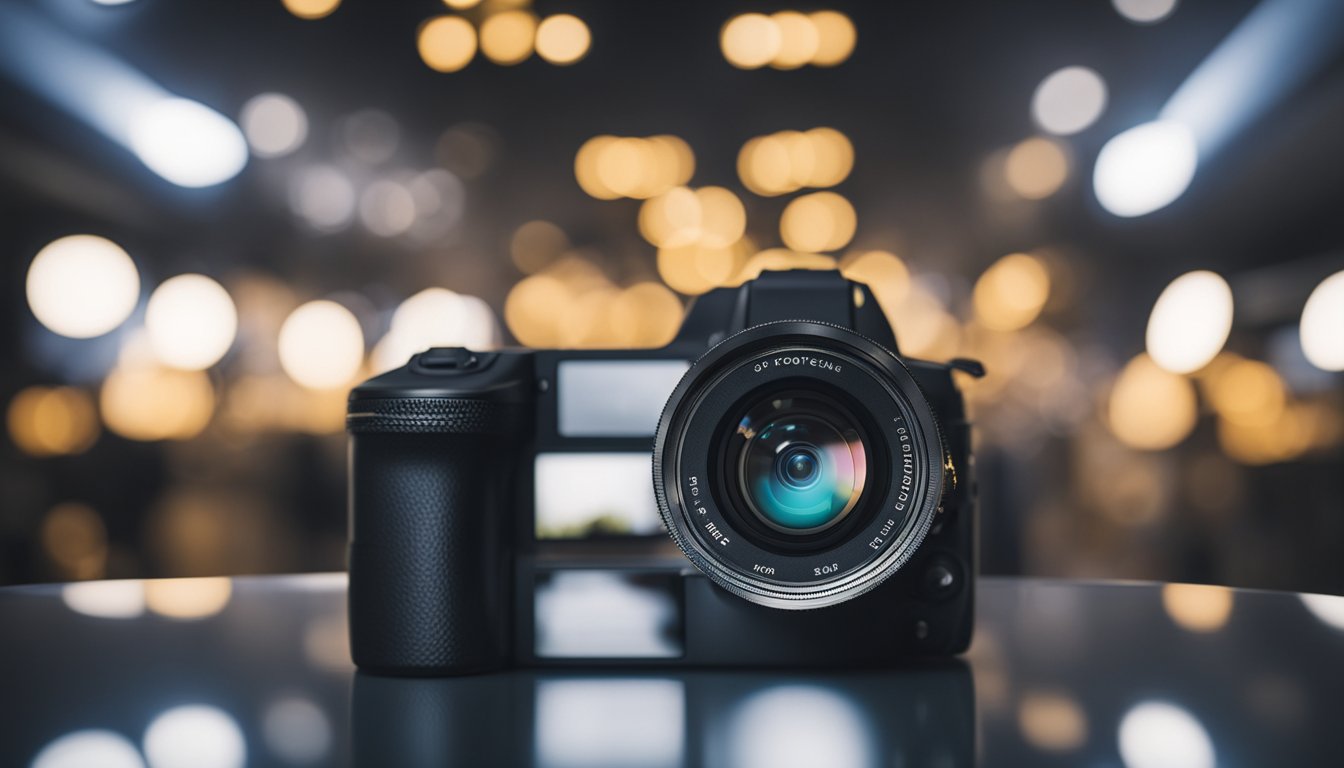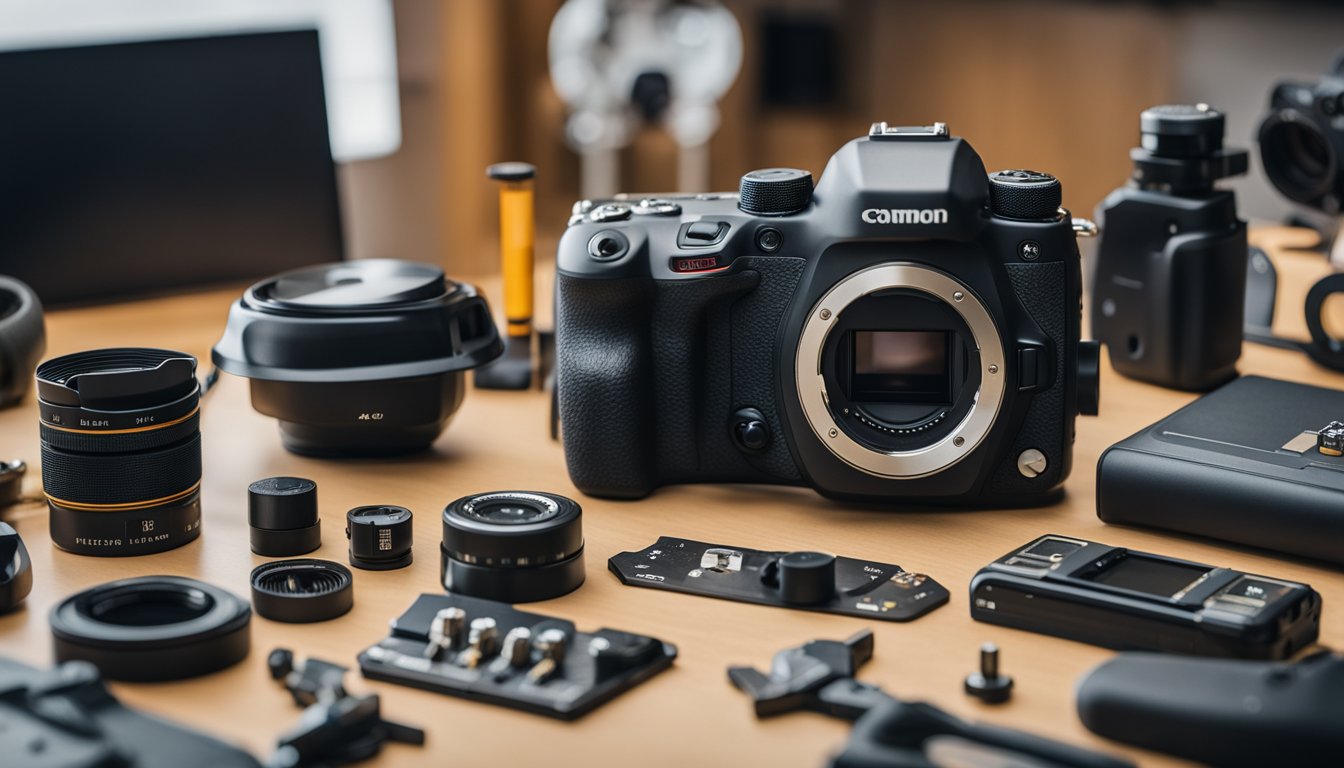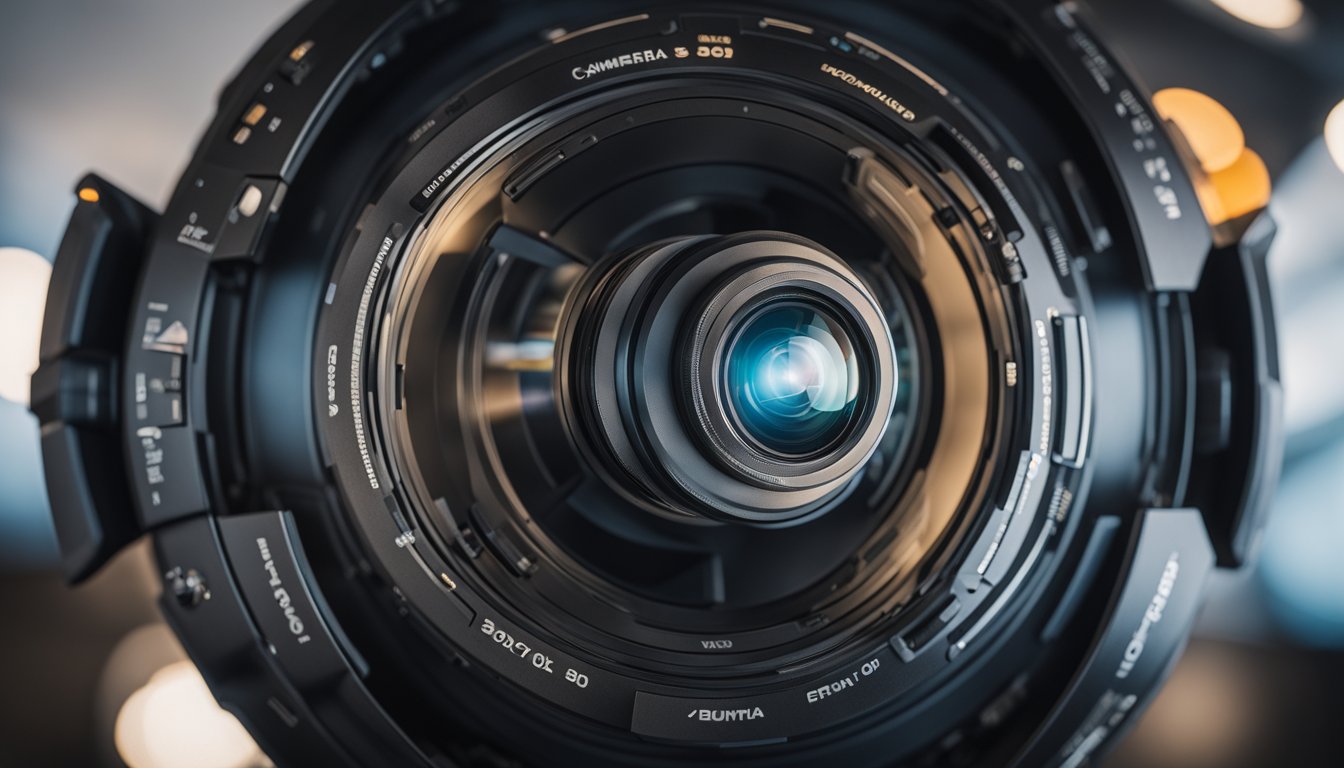If you’re new to 360 cameras, you might be feeling a bit overwhelmed by the number of buttons, settings, and features that these cameras offer. However, with a little bit of patience and practice, you’ll soon be capturing stunning 360-degree photos and videos that will leave your friends and family amazed. In this article, we’ll take a look at the basics of using a 360 camera, including how to get started, basic operations, camera functions, and advanced features.
Getting started with a 360 camera is easier than you might think. First, make sure that your camera is fully charged and that you have a memory card installed. Next, turn on the camera and familiarize yourself with the buttons and settings. Most 360 cameras have a power button, a shutter button, and a mode button that allows you to switch between photo and video modes. Some cameras also have additional buttons for adjusting exposure, white balance, and other settings.
Once you’re comfortable with the basic operations of your 360 camera, you can start exploring its more advanced features. These might include image and video editing, storage and transfer options, connectivity and software options, and troubleshooting tips. With a little bit of practice, you’ll soon be capturing stunning 360-degree images and videos that will transport you and your viewers to new and exciting places.
Key Takeaways
- Getting started with a 360 camera is easy, just make sure it’s charged and you have a memory card installed.
- Basic operations of a 360 camera include using the power, mode, and shutter buttons.
- Advanced features of a 360 camera might include image and video editing, storage and transfer options, connectivity and software options, and troubleshooting tips.
Getting Started
https://www.youtube.com/watch?v=2f6tuJAN2ng&embed=true
Congratulations on your new 360 camera! Here’s a guide to help you get started with your new device.
Unboxing and Setup
When you first unbox your new 360 camera, make sure to check that all the components are included. Typically, you should find the camera, a battery, a power adapter, a USB cable, and a user manual.
Before you start using your camera, make sure to read the user manual carefully. This will help you understand how to use your camera and avoid any potential damage to the device.

Installing the Battery
Installing the battery is straightforward. Simply locate the battery compartment on your camera and insert the battery. Make sure to insert the battery correctly and securely.
Charging Your Camera
To charge your camera, connect the USB cable to the camera’s USB Type-C port and the power adapter. Then plug the power adapter into an electrical outlet. Your camera should start charging immediately.
Make sure to charge your camera fully before using it for the first time. This will ensure that you get the most out of your camera’s battery life.
In conclusion, setting up your new 360 camera is easy and straightforward. Just follow the instructions in the user manual and you’ll be up and running in no time.
Basic Operations
https://www.youtube.com/watch?v=VLEsyFvpcjw&embed=true
« How to Create Virtual Tours without a 360 Camera
Most Expensive 360 Camera: A Look at the Top High-End Options »
If you’re new to using a 360 camera, the basic operations might seem a bit overwhelming at first. But don’t worry, we’ve got you covered. In this section, we will walk you through the basic operations of a 360 camera, including how to power on and off, use the touch screen, and navigate the menus.
Power On and Off
To power on your 360 camera, simply press the power button. The location of the power button may vary depending on the model you have, but it is usually located on the top or side of the camera. To power off your camera, press and hold the power button for a few seconds until the camera turns off.
Using the Touch Screen
Most 360 cameras come with a touch screen that allows you to navigate through the menus and change settings. To turn on the touch screen, simply press the power button while the camera is in standby mode. If you want to turn off the touch screen to save battery life, press the power button again.
Once the touch screen is on, you can navigate through the menus by swiping left or right. To select an option, simply tap on the screen. If you want to go back to the previous screen, swipe from the left edge of the screen to the right.
Navigating the Menus
The menus on a 360 camera can be a bit confusing at first, but once you get the hang of it, they are easy to navigate. To access the menus, simply tap on the menu icon on the touch screen. From there, you can change settings such as resolution, frame rate, and exposure.
To navigate through the menus, swipe left or right. If you want to select an option, tap on it. If you want to go back to the previous screen, swipe from the left edge of the screen to the right.
Overall, the basic operations of a 360 camera are fairly simple once you get the hang of them. With a little practice, you’ll be capturing stunning 360-degree photos and videos in no time!
Camera Functions
https://www.youtube.com/watch?v=8ZPmzuT46UU&embed=true
A 360 camera is a powerful tool for capturing immersive photos, videos, and live streams. In this section, we will explore the different functions of your camera.
Taking Photos
Taking photos with your 360 camera is easy. Simply press the shutter button to capture a 360-degree photo. Some cameras also support HDR photos, which can help you capture more detail in high-contrast scenes.
Recording Videos
Recording videos with your 360 camera is just as simple as taking photos. Press the recording button to start capturing a 360-degree video. Make sure you have enough storage space on your camera and that you are using a fast enough memory card to avoid dropped frames.
Live Streaming
If you want to share your 360-degree experiences in real-time, you can use your camera to live stream. Simply connect your camera to your phone or computer and use a compatible app to start streaming. Some cameras also support 360 live streaming, which allows your viewers to look around and explore the scene as if they were there with you.
Overall, the functions of your 360 camera are designed to help you capture and share immersive experiences. Whether you’re taking photos, recording videos, or live streaming, your camera has everything you need to create stunning content.
Advanced Features
As you become more comfortable with your Fujifilm FinePix A360 camera, you may want to explore its advanced features. This section will introduce you to some of the camera’s most exciting features and how to use them.
Using Manual Modes
One of the most powerful features of the FinePix A360 camera is its manual modes. These modes allow you to take full control of your camera’s settings, including shutter speed, aperture, and ISO. By adjusting these settings, you can create stunning images that capture the exact look and feel you want.
To access the manual modes, turn the mode dial to “M.” From here, you can use the arrow keys to adjust the settings to your liking. Remember, the higher the shutter speed, the less light will enter the camera. Similarly, the lower the aperture, the more light will enter the camera.
Exploring Exposure Settings
The FinePix A360 camera also offers a variety of exposure settings that allow you to fine-tune your images. One of the most useful exposure settings is the exposure compensation feature. This feature allows you to adjust the overall brightness of your image, which can be especially useful when shooting in low light.
To access the exposure compensation feature, press the “Menu/OK” button and navigate to the exposure compensation setting. From here, you can use the arrow keys to adjust the brightness of your image to your liking.
Creative Shooting Modes
The FinePix A360 camera also offers a range of creative shooting modes that allow you to experiment with different shooting styles. One of the most popular creative shooting modes is the timeshift mode. This mode allows you to capture a series of images over a set period, which can then be combined into a single image.
To use the timeshift mode, turn the mode dial to “T.” From here, you can use the arrow keys to adjust the length of time you want to capture. Once you’ve set the time, press the shutter button to start capturing images.
Another popular creative shooting mode is the bullet time mode. This mode allows you to capture a single moment from multiple angles, creating a dramatic, high-energy image.
To use the bullet time mode, turn the mode dial to “B.” From here, you can use the arrow keys to adjust the number of images you want to capture. Once you’ve set the number of images, press the shutter button to start capturing images.
Finally, the FinePix A360 camera also offers a direction focus mode. This mode allows you to select a specific area of your image to focus on, while blurring the rest of the image.
To use the direction focus mode, press the “Menu/OK” button and navigate to the direction focus setting. From here, you can use the arrow keys to select the area of your image you want to focus on. Once you’ve set the focus, press the shutter button to take your picture.
By exploring these advanced features, you can take your photography to the next level and create stunning images that capture your unique vision.
Image and Video Editing
https://www.youtube.com/watch?v=Wfn-fzwQwAc&embed=true
Editing your 360 images and videos is an essential part of the process. In this section, we’ll cover the basics of stitching and editing your content, as well as exporting it for further use.
Stitching and Editing
Stitching is the process of combining multiple images or videos to create a single, seamless 360-degree image or video. Most 360 cameras come with built-in stitching software that does this automatically. However, sometimes you may need to use either an app or desktop software to stitch the captured images.
Once you’ve stitched your images or videos, you can edit them to enhance their quality. Most 360 cameras come with built-in editing tools that allow you to adjust exposure, contrast, saturation, and other settings. You can also use third-party editing software like Adobe Premiere Pro or Final Cut Pro to edit your 360 content.
Exporting Your Content
After you’ve stitched and edited your 360 content, it’s time to export it for further use. Most 360 cameras come with built-in software that allows you to export your content directly to your computer or mobile device. You can also use third-party software like Insta360 Studio or GoPro VR Player to export your content.
When exporting your 360 content, it’s important to choose the right format. Most 360 cameras support popular formats like MP4, MOV, and AVI. You should also consider the resolution and quality of your exported content. Higher resolutions and quality settings will result in larger file sizes, so make sure you have enough storage space before exporting your content.
In conclusion, stitching and editing your 360 content is essential to creating high-quality images and videos. With the right tools and techniques, you can create stunning 360 content that will amaze your audience.
Storage and Transfer
https://www.youtube.com/watch?v=I5TKEogsMH0&embed=true
When it comes to your 360 camera, it’s important to properly manage your storage and transfer files to other devices. Here are some tips to help you get started:
Managing SD Cards
Your 360 camera likely uses a microSD card for storage. It’s important to choose a high-quality card that is compatible with your camera. Look for a card that is UHS-I and has a Class 10 rating for the best performance.
Once you have a suitable card, make sure to format it in the exFAT format. This will ensure that your camera can read and write to the card properly. You can format the card using your camera or a computer.
It’s a good idea to have multiple SD cards on hand so that you can swap them out as needed. This will give you more storage space and allow you to keep shooting without interruption.
Transferring Files to Other Devices
When it comes time to transfer your video files to other devices, there are several options available to you. One common method is to connect your camera directly to your computer using a USB cable. This will allow you to transfer files quickly and easily.
Another option is to use a card reader to transfer files from your SD card to your computer. This can be a good choice if you don’t want to connect your camera directly to your computer.
If you want to transfer files to a mobile device, you can use the 360fly app. This app allows you to connect to your camera wirelessly and transfer files to your phone or tablet.
No matter which method you choose, it’s important to keep your files organized. Create folders for each shoot and label them clearly so that you can find your files easily later on.
By following these tips, you can ensure that your 360 camera is always ready to capture the action.
Connectivity and Software
Connecting your 360 camera to your mobile device and updating the firmware are important steps to ensure you get the best possible experience with your camera. In this section, we’ll cover how to pair your camera with mobile apps and how to update your camera firmware.
https://www.youtube.com/watch?v=BEiI_0a6Tvg&embed=true
Pairing with Mobile Apps
To pair your 360 camera with your mobile device, you’ll need to download the appropriate app for your camera. For Samsung cameras, you can download the Samsung Gear 360 app from the App Store or Google Play. For other cameras, check the user manual or manufacturer’s website for the appropriate app.
Once you’ve downloaded the app, turn on your camera and ensure that WiFi is turned on. Pair your mobile device with your camera by following the instructions in the app. If you’re having trouble pairing your camera, check the manufacturer’s website or contact their support team for assistance.
Updating Camera Firmware
Updating your camera firmware is important to ensure that your camera is running smoothly and has the latest features and bug fixes. To update your camera firmware, first check the manufacturer’s website for the latest firmware version. If there’s a newer version available, download it to your computer and follow the instructions in the user manual to update your camera firmware.
Some cameras may also allow you to update the firmware directly from the mobile app. If this is the case, follow the instructions in the app to update your camera firmware.
If you’re having trouble updating your camera firmware, check the manufacturer’s website or contact their support team for assistance.
Remember, keeping your camera firmware up-to-date is important for the best possible experience with your 360 camera.
Troubleshooting
https://www.youtube.com/watch?v=RO3a6EGlQcA&embed=true
If you encounter issues with your 360 camera, don’t worry, there are some common problems that can be easily resolved. In this section, we will cover some of the most common issues and solutions, as well as how to contact support if your issue persists.
Common Issues and Solutions
One of the most common issues with 360 cameras is connectivity problems. If you’re having trouble connecting your camera to your device, make sure that your camera is properly charged and that your device is connected to the same Wi-Fi network as your camera. If you’re still having trouble, try resetting your camera to its factory settings. You can find instructions on how to do this in your camera’s manual or on the manufacturer’s website.
Another common issue is blurry or distorted images. This can be caused by a dirty lens or incorrect camera settings. Make sure to clean your camera lens with a microfiber cloth and adjust your camera settings to the appropriate lighting conditions. If the issue persists, try updating your camera’s firmware or contacting support for further assistance.
Contacting Support
If you’ve tried all of the above solutions and are still experiencing issues with your 360 camera, it may be time to contact support. Most manufacturers offer support through their website, where you can find troubleshooting guides, FAQs, and contact information. You can also reach out to the manufacturer’s community forums, where other users may be able to help you with your issue.
When contacting support, make sure to provide as much information about your issue as possible, including any error messages or symptoms you’re experiencing. This will help the support team diagnose and resolve your issue more quickly.
In conclusion, troubleshooting your 360 camera doesn’t have to be a daunting task. By following the above tips and reaching out to support if necessary, you can get your camera back up and running in no time.
Accessories and Maintenance
Using Camera Accessories
To get the most out of your 360 camera, you can use various accessories that can enhance your shooting experience. One of the most important accessories is a lens guard. It helps protect the lens from scratches and other damage. If you’re planning to take your camera underwater, you can use a dive case to protect it from water damage. Some cameras, like the Insta360 Pro 2, have a removable battery, which allows you to replace it with a fully charged one when the battery runs out.
Another accessory that can be useful is a lens. Different lenses can provide different perspectives and effects, so it’s worth experimenting with them to see what works best for your needs. Some cameras come with interchangeable lenses, while others have fixed lenses.
Maintaining Your Camera
To keep your 360 camera in good condition, it’s important to take care of it properly. Here are some tips for maintaining your camera:
-
Keep it clean: Use a soft, dry cloth to clean the camera body and lens. Don’t use abrasive materials or cleaners that can scratch or damage the camera.
-
Store it properly: When you’re not using your camera, store it in a cool, dry place. Avoid exposing it to extreme temperatures or moisture.
-
Check for damage: Regularly inspect your camera for any signs of damage or wear. If you notice any issues, such as a cracked lens or a loose battery compartment, take it to a professional for repair.
-
Update the firmware: Check for firmware updates regularly and install them as soon as they become available. This can help improve the camera’s performance and fix any bugs or issues.
By following these tips, you can help ensure that your 360 camera stays in good condition and continues to provide high-quality footage.
Additional Features
Exploring Voice Control
One of the most exciting features of your 360 camera is voice control. With this feature, you can operate the camera hands-free, making it easier to capture your favorite moments. To activate voice control, simply say “Hey [brand name]” followed by the command. For example, you can say “Hey [brand name], take a picture” to take a picture without touching the camera.
You can also adjust the brightness of your camera using voice control. Simply say “Hey [brand name], increase/decrease brightness” to adjust the brightness level. This feature is especially useful when you are shooting in low light conditions.
Understanding Camera Indicators
Your 360 camera has several indicators that provide information about its status. Understanding these indicators is essential for using your camera effectively.
When your camera is in standby mode, the indicator light will blink slowly. To turn off the camera, press and hold the power button until the indicator light turns off.
If you want to reset your camera, press and hold the reset button for 5 seconds. The indicator light will blink rapidly, indicating that the camera has been reset to its default settings.
Additionally, a long press on the power button will activate the Wi-Fi feature of your camera, allowing you to connect to your smartphone or tablet. This is useful for transferring files or controlling your camera remotely.
Overall, your 360 camera has many features that can help you capture stunning photos and videos. By exploring these features and understanding how to use them, you can take your photography to the next level.
Frequently Asked Questions
https://www.youtube.com/watch?v=TAnl7l5bQRY&embed=true
How can I download the manual for my 360 camera?
If you need to download the manual for your 360 camera, you can visit the manufacturer’s website or search for it online. Most manufacturers provide manuals in PDF format that you can download and save to your device for future reference. You can also refer to the user manual that came with your camera.
What are the steps to turn on my 360 camera?
To turn on your 360 camera, press and hold the power button until the camera turns on. The power button is usually located on the side or top of the camera. Once the camera is turned on, you can start using it to capture 360-degree photos and videos.
How do I connect my 360 camera to my smartphone?
To connect your 360 camera to your smartphone, you need to download the app that is compatible with your camera. The app will allow you to control your camera and view the photos and videos that you have captured. Once you have downloaded the app, you can connect your camera to your smartphone using Bluetooth or Wi-Fi.
Which app should I use to control my Samsung 360 camera?
If you own a Samsung 360 camera, you should use the Samsung Gear 360 app to control your camera. The app is available for download on both Android and iOS devices. It allows you to control your camera, view your photos and videos, and share them with others.
Can you guide me through using a 360 camera for the first time?
Sure! Using a 360 camera for the first time can be a bit overwhelming, but it’s actually quite simple. First, make sure that your camera is fully charged and turned on. Then, download the app that is compatible with your camera and connect it to your smartphone. Once you have done that, you can start capturing 360-degree photos and videos by pressing the capture button on your camera or in the app.
What’s the best way to set up WIFI on my 360 smart camera?
To set up Wi-Fi on your 360 smart camera, you need to follow the instructions that came with your camera. Typically, you will need to connect your camera to your Wi-Fi network using the app that is compatible with your camera. Once you have connected your camera to your Wi-Fi network, you can start using it to capture 360-degree photos and videos.









